Introduce in detail how to raise butterfly orchids and what matters needing attention.
Phalaenopsis is one of the plants suitable for indoor culture. The flowers are butterfly-shaped, elegant and elegant, and enjoy the reputation of "queen of orchids". However, most of Phalaenopsis are produced in humid Asia, which determines the growth characteristics of Phalaenopsis. Must be ventilated, breathable, moderate temperature, high humidity environment can be said to be an excellent environment for breeding Phalaenopsis. So, how to raise butterfly orchids?
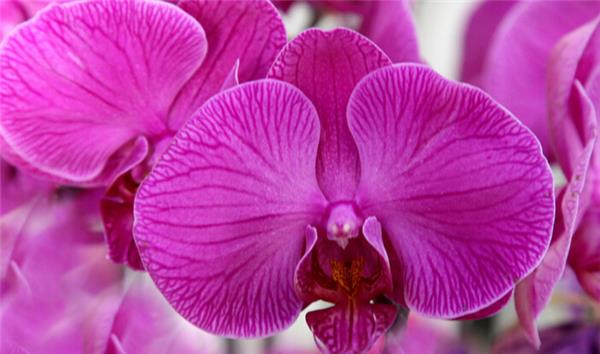
First, the maintenance of Phalaenopsis should be divided into two stages, pre-management and post-management.
Each different period of time to adjust the maintenance temperature, moisture and pay attention to disinfestation, like the late maintenance of the flowering stage, water and fertilizer management is particularly important.
Second, when maintaining, we should pay attention to the following problems.
1. Watering too frequently will cause root rot. Friends who cultivate Phalaenopsis always worry that Phalaenopsis is short of water, regardless of whether the cultivation medium is dry or not, watering it every day, resulting in serious root rot.
2. Keep the temperature right and don't let it get too low. Usually Phalaenopsis flowering plants on the market in early spring, and after buying home are generally placed in the living room and other places to enjoy, although the day temperature in these places is enough, but the night temperature is slightly too low. On the other hand, most of the professionally cultivated orchids are in well-equipped greenhouses, in contrast, the temperature and humidity at home are not enough, so the growth of the plant tends to weaken day by day. Therefore, sometimes, no matter how well maintained, orchids still do not blossom.
Third, disease prevention, Phalaenopsis mainly has the following diseases, we use to pay attention to.
1. Bacterial brown shift disease is the most serious disease of Phalaenopsis. The symptom lies in brown spots on the leaves. It has an oily or heart shape and is surrounded by a yellow shape. The treatment methods include adjusting the amount of nitrogen in the fertilizer application solution, removing diseased plants and maintaining a stable relative humidity. Chemicals have no effect on the disease. This bacterial problem can only be avoided by using healthy plants with good growth conditions.
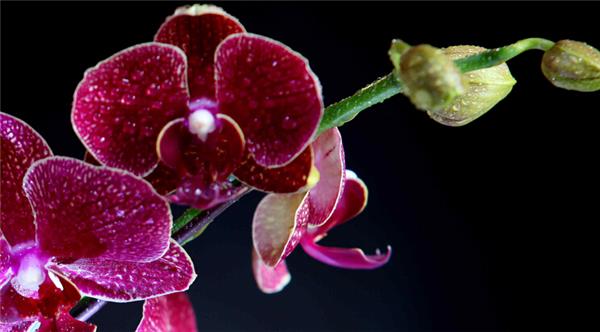
2. Mold. Excessive changes in moisture in the medium or unsuitable EC values cause root damage, thus prompting the mold to attack the tissue. The countermeasure is to reduce the EC value of irrigation water and temporarily reduce the water content of the medium.
Phalaenopsis has a beautiful face, which stands out among many plants. Decorating the house will make the house a little more purple. Whether a house is full of vitality, color is very important, so, what is the breeding method of Phalaenopsis?
1. Seed propagation of Phalaenopsis
Seed propagation is a commonly used method in commercial production of Phalaenopsis. Seedlings propagated by seeds are called seedlings. Phalaenopsis needs artificial pollination to obtain seeds, but its seeds are underdeveloped, have no endosperm and have only a very thin seed coat, so it is not easy to sow seeds under natural conditions.
There are two ways of plant germination in aseptic sowing of orchids. One is protocorm. At the beginning of seed germination, white globular protocorm is formed. With the increase of protocorm volume, hairy pseudoroots appear on the protocorm, then the protocorm changes to green, but the protocorm does not elongate and sprouts from the top of the protocorm. In general, protocorms can differentiate into seedlings. The epiphytic orchids germinated in this way, and the seeds of Phalaenopsis, Calderia and Cymbidium all germinated in the form of protocorms. The other is the rhizome, in which the seeds are white and spherical at the beginning when they germinate, but they soon elongate into a long column and form a rhizome. Then clumps of hairy pseudoroots grow in gaps on the surface of the rhizome. On the differentiation medium, the terminal buds of the rhizome can grow seedlings, but the rate of differentiation is very low. Orchids of terrestrial species germinate in this way.
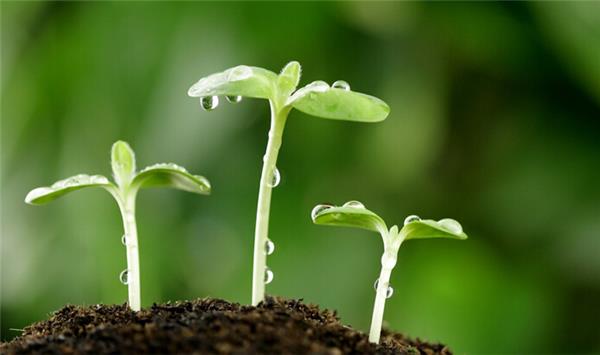
2. Pedicel budding and reproduction
Phalaenopsis is a uniaxial orchid, under normal circumstances, there is only one growing point, that is, only one main stem. However, after the flowers of many varieties of Phalaenopsis wither, young seedlings with roots can often grow on the internodes of their pedicels, which can be cut off and planted separately to grow into a new Phalaenopsis. This method of propagation of Phalaenopsis is the most simple and easy to do under general family conditions, but not every pedicel of each orchid plant can grow pedicel seedlings naturally. The method of artificial budding can ensure that the pedicels of Phalaenopsis grow into pedicel seedlings.
Third, the method of broken heart and accelerating germination and reproduction.
In the process of Phalaenopsis cultivation, we can find that after the growth point of the orchid plant is destroyed due to freezing injury, insect pest, disease and man-made factors, 1 or 2 new buds will grow from the stem node near the base of the orchid plant after a period of time. Taking advantage of this characteristic, we can use the method of breaking heart to promote budding to propagate Phalaenopsis, but the reproduction coefficient of this method is not high. The specific method of operation is to remove the highest heart leaf from the top of the stem, and pay attention to destroying the growth point of the stem tip so that it cannot grow upward; the wound is dried or sterilized with fungicides, after a period of time, 2 or 3 new buds can grow on the stem nodes near the base; when the new buds grow and the roots grow out of the base, they can be cut off and planted as a new plant.
IV. Stem cutting and breeding
The principle of stem-cutting propagation is the same as that of heart-breaking to promote bud propagation, and it also destroys the growth point of stem tip to induce latent bud growth. Although there are 1-3 latent buds in the axils of Phalaenopsis plants, most of them can not sprout into plants. After the plant continues to grow upward and the stem node is longer, the upper part of the plant with root is cut off with a sterilized knife or scissors, implanted into a new basin to make it continue to grow, and the lower part of the rhizome is given proper water management. three new buds can be sprouted soon (depending on the characteristics and management methods of the plant). If the stem of the plant is longer, it can also be considered to cut into multiple segments, as long as each segment has 2-3 internodes or more than 2-3 cm long and more than one root, it is possible to grow into a new plant, but if the rhizome of the plant has dried up and died, then this method is ineffective.
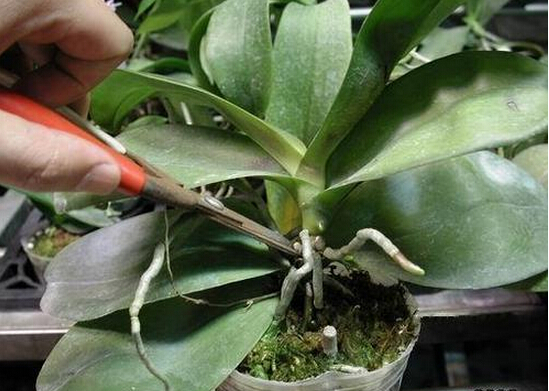
5. Tissue culture and reproduction
Tissue culture asexual reproduction is also called meristematic reproduction. Phalaenopsis stem tips, leaves, root tips, young pedicels, pedicel axillary buds, pedicel internodes and other explants can be used for tissue culture and asexual reproduction. But the commonly used explants are mainly axillary buds of pedicels, internodes of pedicels or leaves of test-tube plantlets.
Phalaenopsis, in addition to its appearance, in fact, it still has many other uses, the following editor for you to introduce it.
1. It serves as the standard of home air environment quality. Phalaenopsis likes high temperature, high humidity, ventilated and semi-overcast environment, avoid waterlogging and air stuffiness, overwintering temperature is not lower than 15 degrees, immediately move indoors to keep the temperature as expected, Phalaenopsis likes the environment with high humidity and ventilation, ventilation is the key to raising Phalaenopsis, but avoid dry and hot wind blowing, planting in the north in winter can not be placed on the radiator or directly to the air conditioning wind, therefore, the more beautiful Phalaenopsis can be cultivated. The better the home environment there is, the more suitable it is for people to live. in addition, red Phalaenopsis means good luck and always tie the knot. Red Phalaenopsis means smooth career and happiness, and Phalaenopsis means that everything goes well and all wishes come true. Yellow Phalaenopsis has the moral of a developed career and prosperous business, while mini Phalaenopsis can convey the blessing of happy angels and weathering.
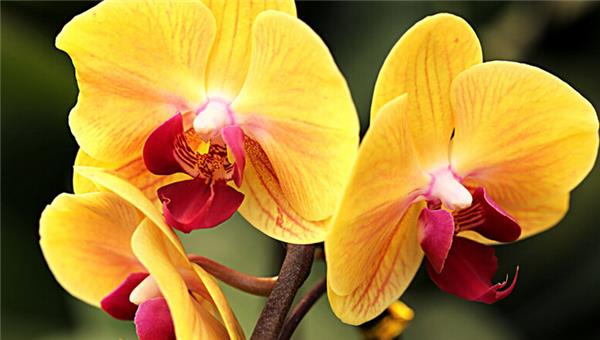
2. It is a carrier pigeon that conveys friendship, love, and even kinship. Phalaenopsis has many interesting meanings, for example, the flower language of Phalaenopsis is that I love you and happiness is coming to you. It can be seen here that if a boy or a girl gives a Phalaenopsis, it is enough to reflect what they want to express. For example, Phalaenopsis represents pure love and precious friendship. If one day, an old friend who has not been in touch for a long time sends himself a bunch of white Phalaenopsis, from the price and meaning of Phalaenopsis, this friend attaches great importance to this relationship.
3. Phalaenopsis can beautify and purify the home. Phalaenopsis is the most beautiful flower in flowers, it is no doubt to use it to decorate the home, its beauty can be better than any kind of flower, it is imaginable that the home with Phalaenopsis is so beautiful and lively, at the same time, it can purify the home, absorb the exhaust gas in the air, and then release the oxygen we need, achieving a ventilation effect.
The above is the introduction of the breeding methods of butterfly orchids introduced by Xiaobian, hoping to help you understand the butterfly orchids better.
Make it unable to grow upward; when the wound is dried or sterilized with fungicides, 2 or 3 new buds can grow on the stem nodes near the base after a period of time; when the new buds grow and the roots grow out of the base, they can be cut off and planted to become a new plant.
IV. Stem cutting and breeding
The principle of stem-cutting propagation is the same as that of heart-breaking to promote bud propagation, and it also destroys the growth point of stem tip to induce latent bud growth. Although there are 1-3 latent buds in the axils of Phalaenopsis plants, most of them can not sprout into plants. After the plant continues to grow upward and the stem node is longer, the upper part of the plant with root is cut off with a sterilized knife or scissors, implanted into a new basin to make it continue to grow, and the lower part of the rhizome is given proper water management. three new buds can be sprouted soon (depending on the characteristics and management methods of the plant). If the stem of the plant is longer, it can also be considered to cut into multiple segments, as long as each segment has 2-3 internodes or more than 2-3 cm long and more than one root, it is possible to grow into a new plant, but if the rhizome of the plant has dried up and died, then this method is ineffective.

5. Tissue culture and reproduction
Tissue culture asexual reproduction is also called meristematic reproduction. Phalaenopsis stem tips, leaves, root tips, young pedicels, pedicel axillary buds, pedicel internodes and other explants can be used for tissue culture and asexual reproduction. But the commonly used explants are mainly axillary buds of pedicels, internodes of pedicels or leaves of test-tube plantlets.
Phalaenopsis, in addition to its appearance, in fact, it still has many other uses, the following editor for you to introduce it.
1. It serves as the standard of home air environment quality. Phalaenopsis likes high temperature, high humidity, ventilated and semi-overcast environment, avoid waterlogging and air stuffiness, overwintering temperature is not lower than 15 degrees, immediately move indoors to keep the temperature as expected, Phalaenopsis likes the environment with high humidity and ventilation, ventilation is the key to raising Phalaenopsis, but avoid dry and hot wind blowing, planting in the north in winter can not be placed on the radiator or directly to the air conditioning wind, therefore, the more beautiful Phalaenopsis can be cultivated. The better the home environment there is, the more suitable it is for people to live. in addition, red Phalaenopsis means good luck and always tie the knot. Red Phalaenopsis means smooth career and happiness, and Phalaenopsis means that everything goes well and all wishes come true. Yellow Phalaenopsis has the moral of a developed career and prosperous business, while mini Phalaenopsis can convey the blessing of happy angels and weathering.

2. It is a carrier pigeon that conveys friendship, love, and even kinship. Phalaenopsis has many interesting meanings, for example, the flower language of Phalaenopsis is that I love you and happiness is coming to you. It can be seen here that if a boy or a girl gives a Phalaenopsis, it is enough to reflect what they want to express. For example, Phalaenopsis represents pure love and precious friendship. If one day, an old friend who has not been in touch for a long time sends himself a bunch of white Phalaenopsis, from the price and meaning of Phalaenopsis, this friend attaches great importance to this relationship.
3. Phalaenopsis can beautify and purify the home. Phalaenopsis is the most beautiful flower in flowers, it is no doubt to use it to decorate the home, its beauty can be better than any kind of flower, it is imaginable that the home with Phalaenopsis is so beautiful and lively, at the same time, it can purify the home, absorb the exhaust gas in the air, and then release the oxygen we need, achieving a ventilation effect.
The above is the introduction of the breeding methods of butterfly orchids introduced by Xiaobian, hoping to help you understand the butterfly orchids better.
- Prev

Step by step introduce the culture method of the lotus, how to create the beautiful lotus.
Step by step introduce the culture method of the lotus, how to create the beautiful lotus.
- Next

How to master the culture methods and functions of epiphyllum
How to master the culture methods and functions of epiphyllum
Related
- Wuhan Hospital Iron Tree Blooming Result Was Instantly Frightened by the Gardener Master
- Which variety of camellia is the most fragrant and best? Which one do you like best?
- What is the small blue coat, the breeding methods and matters needing attention of the succulent plant
- Dormancy time and maintenance management of succulent plants during dormancy
- Minas succulent how to raise, Minas succulent plant pictures
- What are the varieties of winter succulent plants
- How to raise succulent plants in twelve rolls? let's take a look at some experience of breeding twelve rolls.
- Attention should be paid to water control for succulent plants during dormant period (winter and summer)
- Watering experience of twelve rolls of succulent plants
- Techniques for fertilizing succulent plants. An article will let you know how to fertilize succulent plants.

